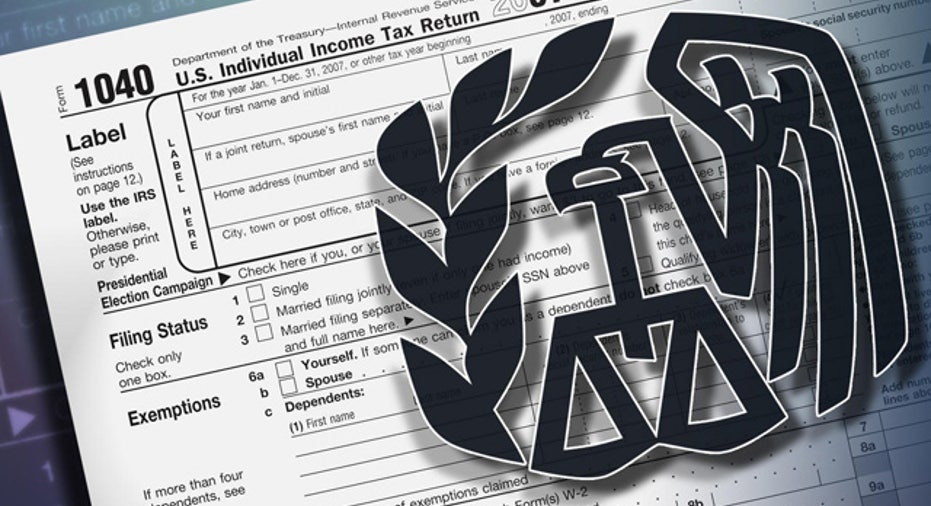Taxes: 7 Tips for Last-Minute Filers

Nearly one-third of Americans will file their taxes in the two weeks leading up to this year’s April 18 deadline. Are you one of the last-minute filers? Here are some tips from Bob Scharin, senior tax analyst at Thomson Reuters, to help make this year’s personal tax return preparation more manageable and avoid mistakes.
Two sides to the first-time homebuyer credit
If you purchased your first home in the earlier months of 2010, you may be entitled to a tax credit of up to $8,000. This credit and the eligibility requirements have received a lot of positive attention, but less publicized is an important aspect of an earlier incarnation of the credit. If you claimed a first-time homebuyer’s credit on your 2008 tax return, you have to pay extra tax now.The credit in 2008 was really nothing more than an interest-free loan that generally must be paid back over 15 years, beginning with the 2010 return. This means a $500 repayment with your 2010 return if you claimed the maximum 2008 credit of $7,500.
Energy-efficient property credit
Purchases of energy-efficient windows, doors, or insulation for your primary home can qualify you for a 30% tax credit of up to $1,500. But if you made the purchases in both 2009 and 2010, you may see red when you calculate your 2010 credit for being green. The $1,500 ceiling on the credit is an aggregate for 2009 and 2010, so if you claimed the maximum credit on your 2009 return, you cannot claim an additional credit for 2010.
Roth IRA conversion offers tax timing choice
If you converted funds from a traditional IRA to a Roth IRA in 2010, you do not need to pay tax arising from the conversion with your 2010 return. Instead, the income is taxable like this: half in 2011 and half in 2012. The tax law does allow you, however, to elect to be taxed in 2010. If you expect to be in a higher tax bracket in 2011 and 2012, consider making the election. When predicting whether your tax bracket will rise in 2011, look at more than just your anticipated salary. Other factors, like possible law changes, filing status (for example; marriage or divorce), and commencement of Social Security benefits, can increase your tax bracket.
College tuition tax credit
The American Opportunity tax credit provides tax savings of up to $2,500 per eligible student. This credit is available, however, for only the first four years of undergraduate education. If you or your child is on the five-year plan, you will need to look into other tax breaks for education costs starting with year five. In contrast, the lifetime learning credit can be claimed for an unlimited number of years; this credit has a $2,000 ceiling per taxpayer.
Canceled debt is not necessarily a free lunch
When a lender lets you off the hook, the government may put its hand out for its share. Debt that a lender agreed to cancel can be taxable income. Various exceptions, however, may apply. For instance, up to $2 million of debt cancellation on your principal residence could be tax-free. In contrast, cancellation of credit card debt or mortgage principal on a vacation home is taxable — unless you are insolvent or in bankruptcy.
Alternative minimum tax patch is fraying
The alternative minimum tax (AMT) exemption amounts were increased in 2010 (to $47,450 for singles, $72,450 for joint return filers, and $36,225 for married individuals filing separately), so the number of individuals who are subject to the AMT is not expected to rise by much from prior years. The exemption amounts begin to phase out at certain income levels ($112,500 for singles, $150,000 for joint return filers, and $75,000 for married individuals filing separately), and these levels have not been adjusted to reflect inflation.
Thus, someone with a high income this year does not necessarily benefit from the higher exemption amounts. If you had unusually high income in 2010, perhaps from significant taxable cancellation of debt income, IRA distributions, or capital gains, check to see whether you owe AMT, even if you did not owe this tax in the past. You may also wind up owing AMT if your state and local taxes increased (for example, your real estate tax jumped) because those taxes are not deductible for AMT purposes.
Last year’s return can provide new savings
Information on last year’s tax return can be relevant in figuring this year’s tax. Look to see whether you had a capital loss carryover from 2009 that can offset your 2010 capital gains and up to $3,000 of ordinary income; or maybe you had an overpayment from 2009 that you applied as a prepayment of your 2010 tax. Also, a 2009 state income tax refund you received in 2010 is taxable on your federal return only to the extent you received a tax benefit in 2009 for the state tax payment. Your 2009 return is needed to make that determination.
Scharin concludes with one last tip. “A quirk in the calendar this year gives taxpayers three extra days to file their returns. Friday, April 15 is observed as Emancipation Day in the District of Columbia, thereby extending the filing deadline to the next weekday – Monday, April 18.”Taxpayers should consult with a personal tax adviser before applying these or other tax strategies. Up-to-date analyses of legislation and regulations affecting individual taxpayers are available on Thomson Reuters’ Checkpoint research service.



















